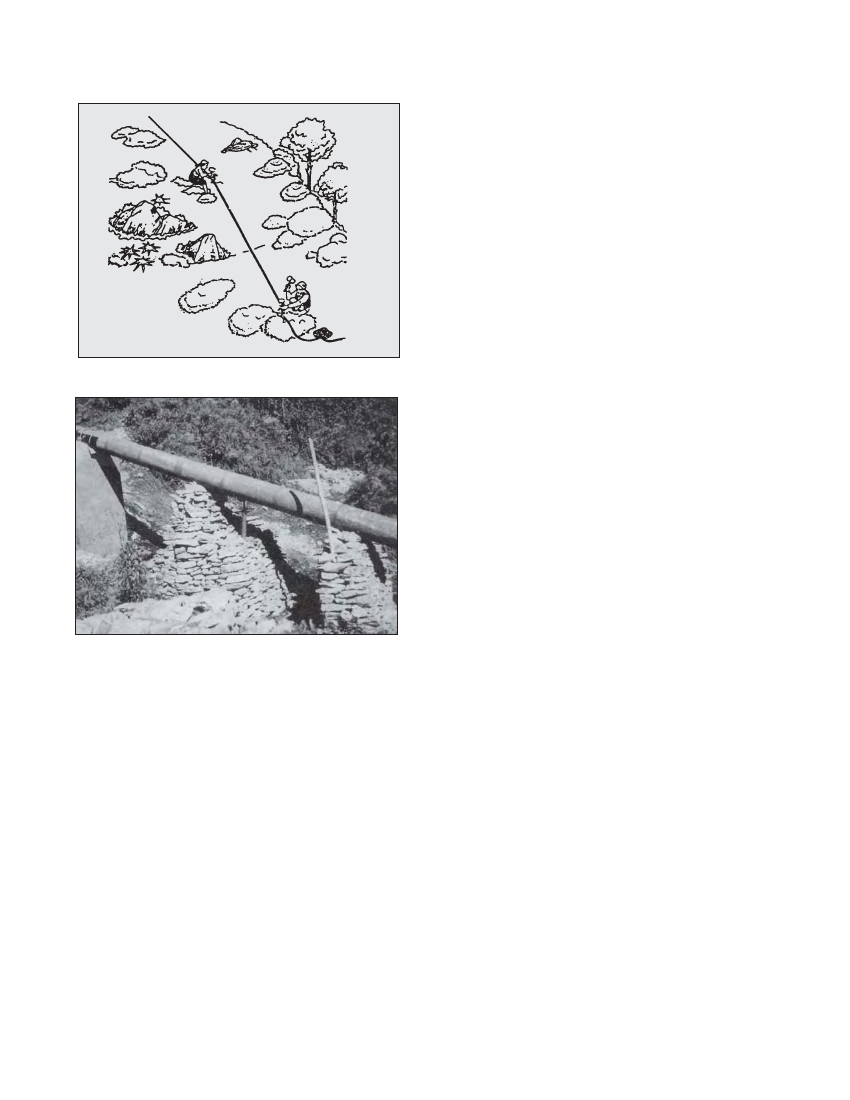
104 CIVIL WORKS GUIDELINES FOR MICRO-HYDROPOWER IN NEPAL
pump. If any leakage is noticed, the section should be
repaired such as by tightening the bolts, changing faulty
gaskets or welding. For buried pipe alignment, the backfill
should only be completed after successful pressure testing;
however, if there are any minor bends without anchor blocks,
these must be backfilled before pressure testing. Once the
pipe trench is backfilled, it will be difficult and time
consuming to reexcavate and identify the leaking section.
Figure 6.8 Setting out the centreline of the penstock alignment
6.13 Maintenance
Above ground mild steel penstocks should be repainted every
3 to 4 years depending on the conditions. Nuts, bolts and
gaskets of flange connected mild steel pipes should be checked
annually, loose bolts should be tightened and damaged gaskets
should be replaced. A visual check for flange leaks should be
carried out monthly. For buried penstock sections, signs of
leakage such as the sudden appearance of springs along the
alignment (especially during winter) and moist ground where
the area was previously dry should be checked. If any leakage
is noticed, the penstock should be drained and carefully
excavated for repair of the leaking section
Photo 6.15 Temporary support for site welding work, jhankre
mini-hydro, Nepal
not feasible at the machine foundation. For micro-hydro
schemes, laying of penstock in discrete lengths is not
recommended since this can lead to misalignments of
the pipes.
Penstock pipes should be pressure tested at the factory
before transport to site. For schemes where the head is
more than 15 m the completed penstock should also be
pressure tested during the commissioning phase. If feasible
such pressure test should include the surge head (i.e.,
pressure test at htotal). This can be done by simulating the
expected surge head at the forebay using a manual pressure
6.14 Checklist for penstock work
Refer to Table 6.1 and decide on the penstock material.
When in doubt compare the costs of all available options.
Is the alignment on practical ground slope? Is there
adequate space for the powerhouse area at the end of the
penstock alignment? Have the bends been minimised?
For mild steel pipes refer to Table 6.3 to decide on flange
connection or site welding. Also be sure to specify
appropriate coats of paint.
If a buried penstock alignment is being considered, refer to
Table 6.4 to compare the advantages and disadvantages,
and Figure 4.8 for the trench details.
Is the pipe diameter such that the headloss is between 5%
and 10%?
Has allowance been made for surge effects while sizing the
penstock wall thickness?
Is the safety factor sufficient as discussed in Section 6.6?
Are the pipe lengths and weights such that they are
transportable and porterable?
Refer to Section 6.12 for pipe installation at site.